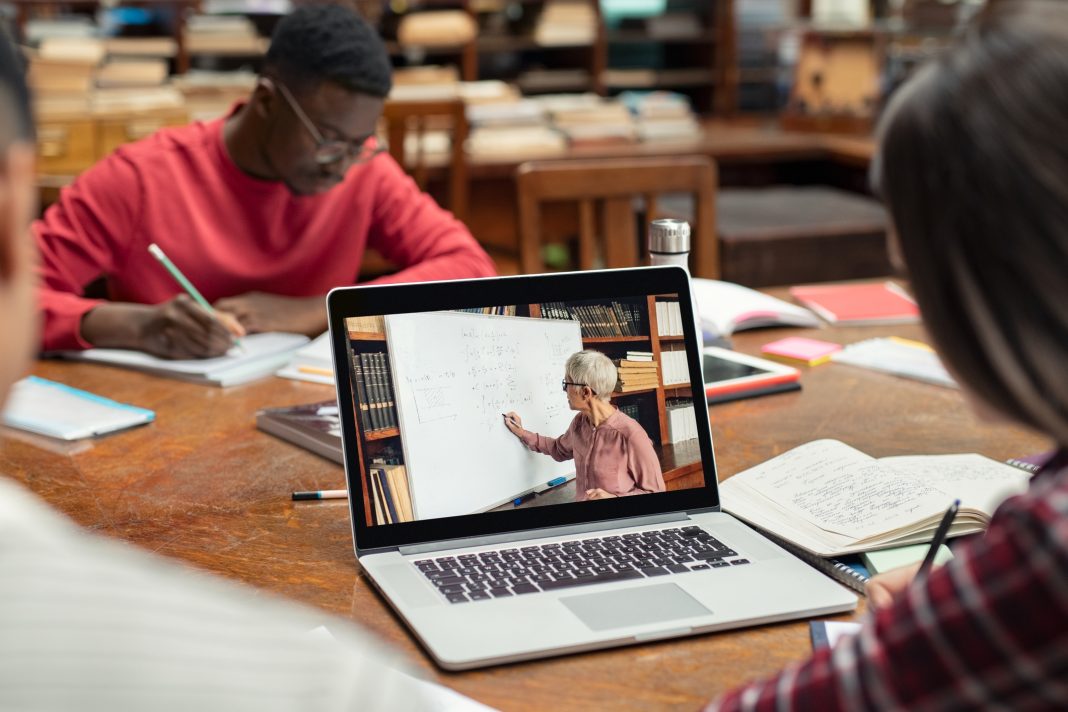The digital higher education expectation gap is larger than most would think, so we look at what it means for universities and the student’s digital experiences
With the TikTok student generation immersed in a digital bubble filled with slick streaming services, online retail services and gratifying social media platforms, it’s no wonder that they expect high-quality and personalised digital experiences in all areas of life, including in their education.
Being able to book library computers easily, check changing timetables quickly, access lecture notes online, interact with other students (whether that’s via an online chat forum or a society website page) and schedule video calls with university support staff, are all now expected from a university’s digital experience. These all require quality well-designed user experience-informed interfaces to function well and benefit students.
Yet most universities are still not offering what students would regard as “state of the art” digital experiences, even after more than two years of online learning that was turbo-charged due to COVID. A one-size-fits-all approach – that hasn’t been working for a long time – has fragmented the student body further still post-pandemic.
Great State’s latest research, The Higher Education Digital Experience Report 2022 – which includes findings from a study of more than two thousand students currently attending university – found that 91% of students believe that what their university offers in terms of digital services should be as strong as face-to-face lectures and life on the physical campus.
But as the report shows, they still have a long way to go until they are matching digital experiences on the same level as Amazon or Netflix, especially on the learning side.
Why does a good digital experience matter?
With university satisfaction scores in the National Student Survey (NSS) falling steeply last year, and complaints to the Office of the Independent Adjudicator (OIA) at an all-time high, the future quality of a university’s digital offering will be a huge factor in determining an institution’s success or decline.
Whilst COVID initially pushed ill-prepared universities into delivering learning through digital and online channels, students’ higher expectations of digital services and quality of digital delivery is now a fundamental aspect of the university experience, with almost 70% of students saying digitised universities must become as good as Amazon, Netflix and Facebook.
70% of students say digitised universities must become as good as Amazon, Netflix and Facebook
Whilst this figure may seem high, the fact that it isn’t higher demonstrates an acknowledgement and allowance from some students that universities aren’t currently able to deliver against the experience bar set by digitally native platforms, but this leeway will eventually die out.
Students are increasingly basing their university choice not only on the course, grades and location, but also on the delivery of learning and the wider campus experience to make sure they are getting the most for their money.
Universities are certainly aware that NSS ratings fell as a result of the pandemic – their hands are being forced and as a result, they’re having to devote significant attention to improving the whole student experience, both physical and digital. Historically a strong university brand has guaranteed student numbers, and to a degree high NSS scores, but ignoring the need to develop a strong digital student experience could prove detrimental in the long run, even to the well-establish Russell Group universities.
As for ‘challenger’ universities who had to work hard to attract students after the removal of student intake caps in 2015, could getting their digital experience right create the USP they’ve been searching for to improve their NSS scores? Providing better digital experiences than their more established counterparts might set them head and shoulders above well-established institutions as they carve out their appeal in a crowded marketplace.
Great State’s report shows that students were unequivocal about why a university’s digital experience delivery should be of a high standard – with 90% agreeing with the statement “it helps me to perform better academically” and 92% saying it helps them manage their student life.
A high proportion also said good digital experiences help mental well-being, making them feel part of the university and the student community. All factors reduce the instance of first-year dropout, something which has been steadily increasing since the onset of the pandemic.
Creating a sense of community digitally
Students expect the digital experience to support them not just in learning but in their whole student life. The ability to connect and be part of a community continues to be important to all students, not just those who are studying remotely.
Great State’s research found that 86% of students agreed that good digital experiences are a great way to build a strong student community. In addition, except for accessing learning resources, messaging other students was the most frequently used digital tool – used by 37% of students surveyed daily.
86% of students agreed that good digital experiences are a great way to build a strong student community
Increasingly, universities are cottoning on to the potential value of students beyond graduation. In terms of maintaining a network, but also for profitable post-graduate opportunities. Connecting with other alumni was the digital service students would most like after they graduate with almost half saying they would like access to events offering the opportunity to connect with other alumni.

For HEIs it’s a case of understanding that digital services shouldn’t just be about learning – social connection plays an important part in the wider student experience. By encouraging connection and community in all its forms – knowledge sharing, emotional support, social connections – through digital means, it enhances the physical experience or replicates it for those not attending in person. Remote doesn’t and shouldn’t mean isolated.
Universities are at risk of being left behind
Great State’s report exposes the huge digital experience gap between what digital native students want and what they are getting. Without change, student expectations will outstrip universities’ ability to keep up.
Whilst there’s an ambition by universities to be more digital, many do not have an actual digital strategy. Instead, many consider digital a way of enabling their wider university 2030 visions which are already in place. However, this may result in any digital advancement being fragmented and led by individual technical solutions rather than the student experience.
The digital diversity divide
Worryingly, Great State’s research revealed significant differences in the adoption of digital experiences by key segments of the student population. At a time when universities are actively trying to tackle diversity, inclusivity and equality, some of the digital experience’s universities have developed may unwittingly be widening the gap they’re aiming to close.
For example, Great State’s research found that students who identified as black are less likely to say a good digital experience helps them to perform better (83% vs 91% for students who identified as white) suggesting black students have lower expectations of what digital can do, or they do not expect these services to be helpful or relevant to their lives.
The report also found that female students use learning resources more than male students, yet twice as many male students use non-learning digital services such as a way to manage accommodation and health and wellbeing support. Suggesting that female students primarily view digital as support for them academically but not for other scenarios.
21% of students feel that their institution was behind the curve or had no wider digital services to speak of
Whilst every university has ‘gone digital’ to varying degrees to support its student population, less than a quarter (23%) of students thought their university’s digital learning delivery was comparable to current standards of technology in other areas of life – with 21% feeling that their institution was behind the curve or had no wider digital services to speak of.
And in terms of the total digital campus experience and student life, 93% wanted learning and campus services combined in a complete digital experience including social, cultural, organisational, health and well-being services.
Universities need to deliver digital change – now
Given it takes around two to three years to implement a digital strategy across a large organisation, complacent universities may not act fast enough to close the gap as student patience runs out and expectations increase. Universities need to lead, not follow, to match student expectations.
Once the foundations of digital experiences are in place, opportunities need to be centred around making smarter use of data to provide more personalised digital content and services to students – enabling real-time, automated, personal and intelligent communications.
Some universities are striving to lead the way in digital, whilst others are struggling, but in general higher education is generally playing catch up to other sectors when it comes to digital transformation.
But with so much opportunity for HEI’s to use digital for transformative change, there’s certainly an exciting future ahead.
This work was provided by Nicola Hinds, Strategy Director, Great State











